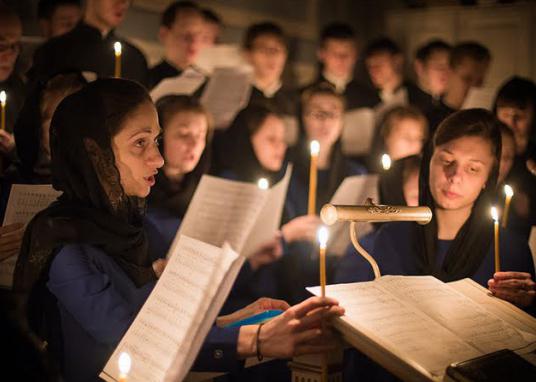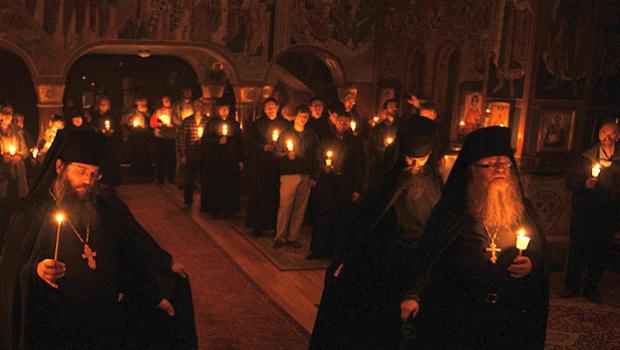Each year in January, a week after the birth of Christ, another great Christian holiday is celebrated - the Circumcision of the Lord. On January 14, he completes the entire cycle of services dedicated to a joyous event for all believers - the birth of the Savior. On this day, Orthodox people gather in churches where prayer chants are sung, among which the Akathist to the Circumcision of the Lord occupies an important place. Where did this holiday come to us from and what is its meaning?
Old Testament Circumcision
Circumcision is an ancient custom dating back to the Old Testament. Seven days after birth, sacred action was performed on male babies, symbolizing their entry into Union with God. At the same time, newborns received names that were, as it were, the seal of this event.
The baby Jesus, who came from the family of Abraham according to the flesh, was also brought in due time by the Virgin Mary and her betrothed Joseph to the temple, where he was circumcised. At the same time, He received the name Jesus, who ordered the Archangel Gabriel to give Him when he announced to the Virgin Mary the message of Her great destiny.
The establishment of the holiday and its meaning
From the first centuries of Christianity this great event is celebrated annually. This holiday, the Circumcision of the Lord, inspired the great fathers of the church to create many theological works. In particular, they emphasize that the fulfillment of this custom over the infant Christ has a deep meaning. An example was shown of the strict observance of the commandments of God, so that no one doubts that his flesh is truly human, and not ghostly, contrary to the later statements of the followers of various heretical teachings. In honor of this momentous event, a holiday was established and Akathist wrote to the Circumcision of the Lord.
What is akathist
Speaking of Orthodox church services and chants performed in connection with certain significant events, one needs to understand what Orthodox akathists are, when and in honor of what they are performed. People attending services know that akathist is a complex church hymn consisting of 25 stanzas. It praises Christ, the Blessed Virgin Mary and various saints. During singing, as throughout the Orthodox service, worshipers stand. By the way, the word "akathist" in Greek means "not sitting."
Akathist construction structure
The structure of this form of chant includes thirteen parts called kondakas, and twelve called icos. Kondak in translation - "core". It summarizes the meaning of the holiday or describes the deeds of the saint in whose honor it is performed. At the end of each kondak, praise be given to God - “Hallelujah!” Ikos is a more extensive description of the essence of the holiday. It is never performed separately. The exclamation “Rejoice!” And the refrain of the first kondakka completes his. In Greek, this word means "home."

All akathist singing or reading consists of alternating pairs of kondakas and ikos. The thirteenth, unpaired kondak, is a prayer to the saint, in whose honor a prayer or feast takes place. It is repeated three times. The structure of the construction of akathists is a lot of unusual and noteworthy. Few people know that all the akathists now performed, and there are more than six hundred of them, are written on the model of the most ancient akathist of the Blessed Virgin Mary, dating from the sixth or seventh centuries. The form and construction of it served as a starting point for subsequent authors.
Features of Akathist Circumcision of the Lord
The Akathist to the Circumcision of the Lord is written according to the same scheme, classical for spiritual works of a similar genre. Its beginning is the first stanza, called Kukuliy, which is translated from Greek as "hood." She, as it were, covers herself with the whole subsequent composition. It is followed by twelve pairs of large and small stanzas. Ikos are built on the basis of a strict rhythmic foundation, achieved by alternating stressed and unstressed syllables. This gives the text musicality and poetic sophistication. All this gives reason to put Akathist in the Circumcision of the Lord in a series of outstanding creations of spiritual poetry.
In Russia, the first akathists appeared in the second half of the 14th century. The most ancient monument of works of this kind is the Akathist to the Blessed Name of Jesus, now known as the Akathist to Jesus the Sweetest. In the same period, at the very end of the Byzantine era, Greek hymns appeared, modeled after the Akathistos of the Blessed Virgin Mary.

The Savior, who appeared in the world, established the New Testament with people and in return circumcised ordered the Sacrament of Baptism, which also symbolizes the Union with God. Thus, the Old Testament circumcision was a type of the future cleansing from sin in the baptismal font. This is the meaning of the holiday, which according to the church calendar is classified as Great. In honor of him solemn canons were composed and churches were consecrated. Its religious and philosophical meaning came from the depths of centuries. The celebration of the Circumcision of the Lord coincides with the memory day of St. Basil the Great and is sometimes called by people the Vasily Day. From ancient times it was one of the most revered holidays of Orthodox Russia.